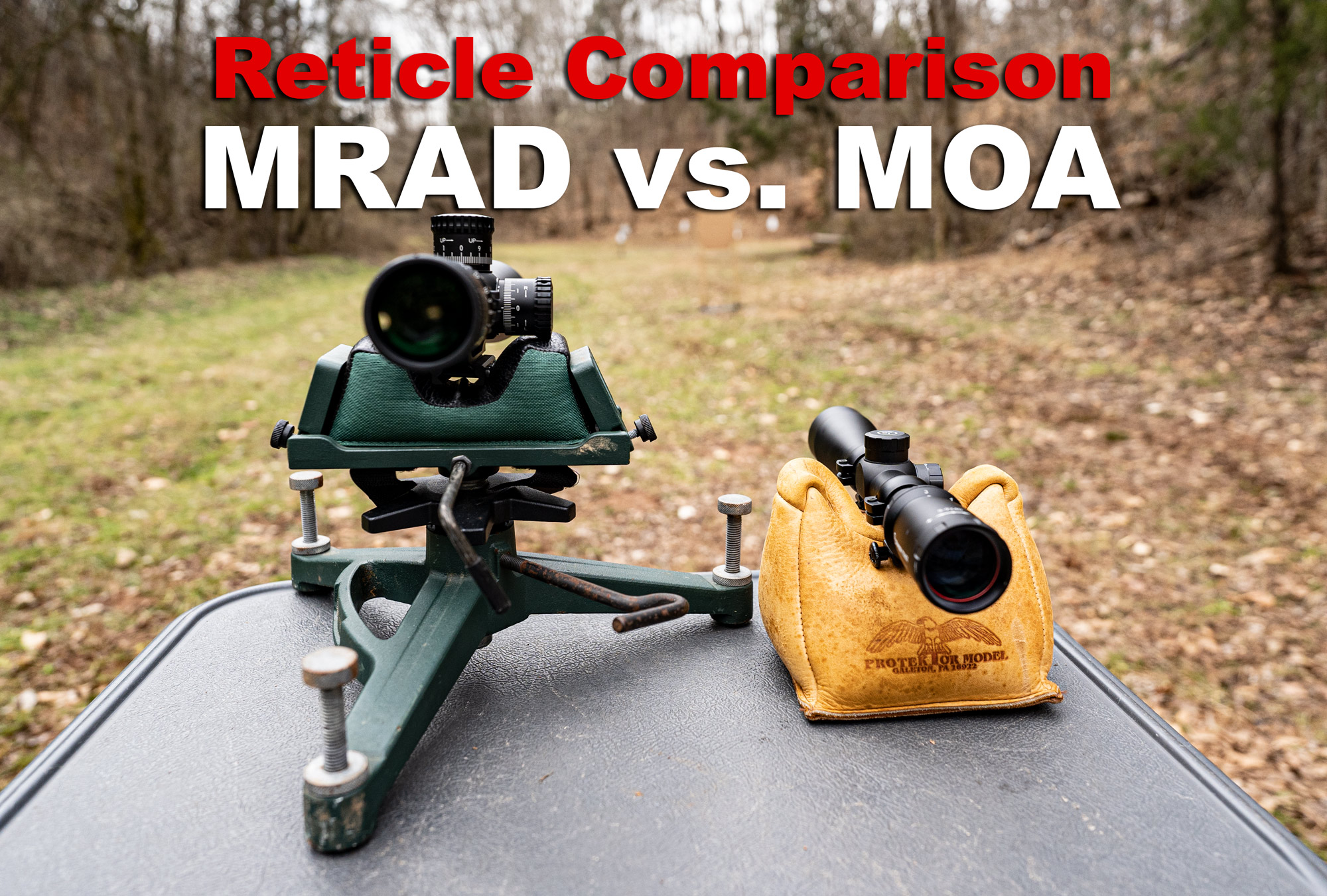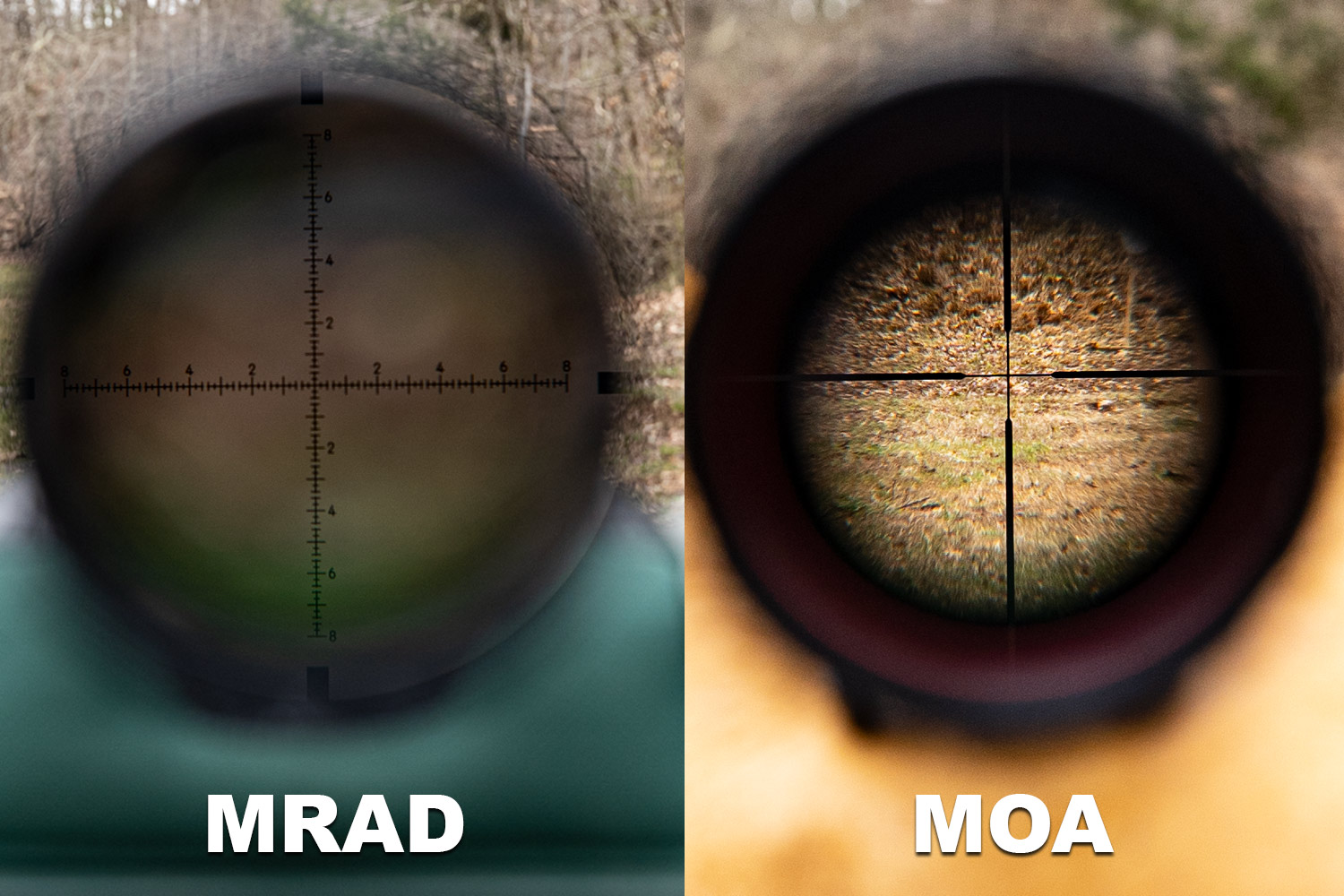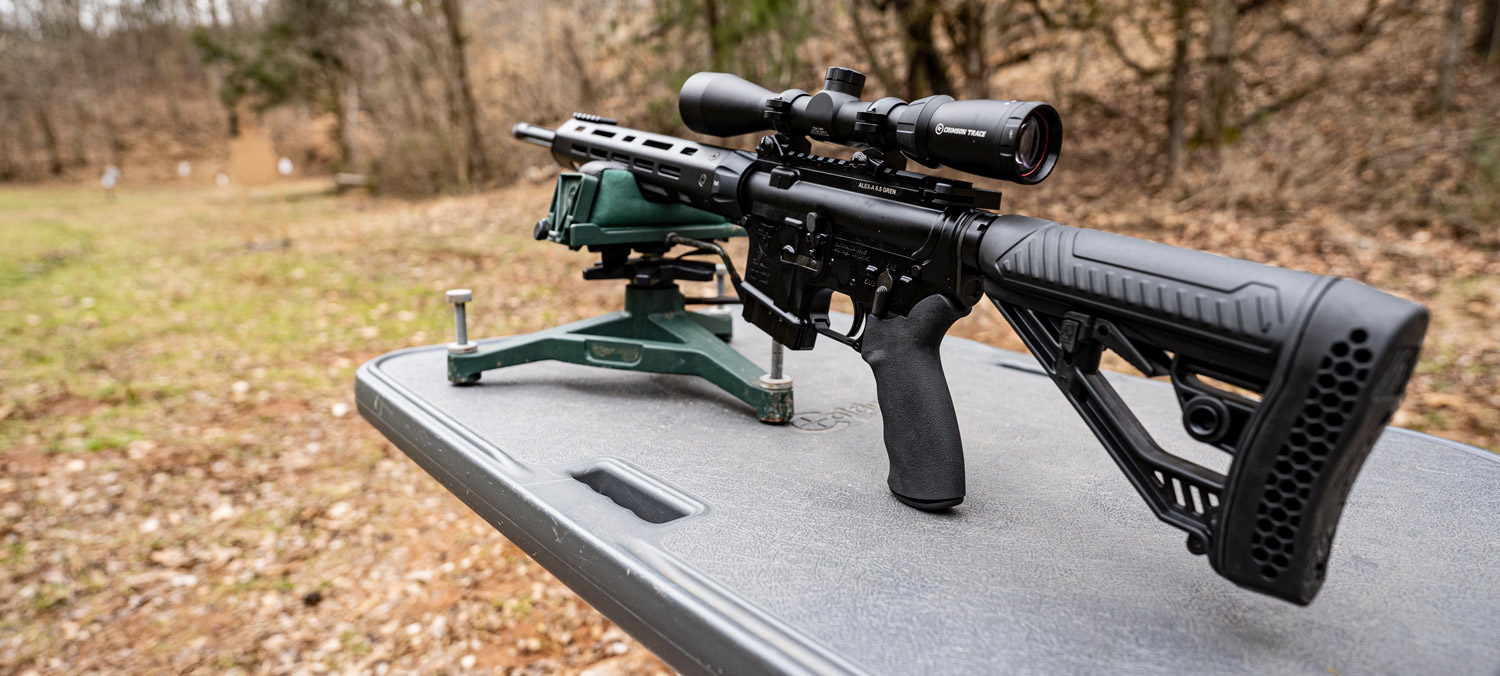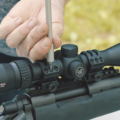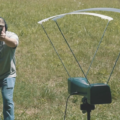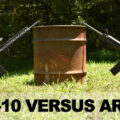A side by side look at MRAD vs MOA optic systems – which reticle style is best for your set-up? We can help you decide which is a better bet.
Shooting, in essence, can be a simple hobby. But like all activities, it can become extremely complicated. MRAD vs MOA is a perfect representation of this fact.
Suppose you decide to buy a new rifle. You’ve done your research, determined exactly what cartridge you want to shoot, and found the precise firearm for your specific needs.
But now you need a scope.
So you start pouring into more research about the best scopes. You look up magnification, mounts, prices, and more, but throughout your search you keep coming across “MOA” and “MRAD” scopes. You remember hearing or reading something about MOA and MRAD, but you can’t remember what they are and which is best.
The truth is, neither is “better.” They are simply different. Read on to hear how and which might fit your mindset best.
MOA vs MRAD: Which is Right for Your Scope?
Sighting 101
Let’s start with a brief tutorial on rifle scopes and sighting. This will lay the foundation for our discussion on MRAD vs MOA.
While there are many other factors, aligning a rifle scope is essentially involves two main components: the reticle and the turret.
- The reticle is the crosshairs or red dot (or whatever focus point you have) that provides an aiming point while you shoot. You can laser focus a reticle into the scope or make it from wire contained within.
- The turrets are the adjustable knobs on the scope. You can use them to change the position of the reticle. Usually located on the top and side of the scope, turrets help shooters adjust the sighting of the rifle so the reticle visually aligns with the desired target.
When sighting a rifle, the reticle and turrets are used together to reach the most precise shot possible. The goal, of course, being that the bullet lands exactly where the visual position of the reticle is pointing.
Using the turrets to adjust the reticle, shooters can create better accuracy. But there are two different systems of scope alignment: MOA and MRAD.
MOA and MRAD are simply two different units of measurement. Like yards vs meters, gallons vs liters, inches vs centimeters, or pounds vs kilograms, MOA vs MRAD is simply a different way to measure the same thing.
In this case, we are not talking about distance, volume, or weight. Instead, we’re talking about the amount of angle as you adjust a sight.
What is MOA?
MOA, or “Minute-Of-Angle,” is based on one of the most ancient angle-measuring system in the world: the 360-degree system that most of us are familiar with. The MOA system, which was created by ancient Sumerians, is built on a base-60 format. (Our numbers are operate on a base-10 format.) It’s based on the system of dividing a circle into 360 degrees. However, it goes much finer than that, as each degree is divided into 60 minutes, hence the name “minutes” of angle.
Scopes with an MOA system adjust their sighting based on this system, with each “click” representing a quarter of a minute. At 100 yards, each minute of angle at the scope is equal to roughly (but not precisely) 1 inch difference at the target.
Scopes using MOA often use a one-fourth MOA system. This means that each “click” of the turret moves the reticle one-fourth of an MOA. There are also one-eight MOA sights, which means you need to make eight clicks to move the sights one full minute. These are obviously more precise than one-fourth scopes.
What is MRAD?
The MRAD scopes are built on a 10-base system. This system was originally developed for artillery purposes in the late 1800’s, and it offers a precision system that is often more useful and understandable to many shooters.
MRAD is short for milliradian, which is usually the preferred method for military and law enforcement purposes. This system is gaining popularity in the civilian market.
This system is based on a radian, a unit of angular measurement that is equal to roughly 57.3 degrees. A milliradian is one thousandth of a radian. (There are 1,000 milliradians in a radian.) Because of it’s background in artillery and not circular geometry, this system does not come out to make a perfect circle; there are, however, roughly 6283 milliradians in a full circle.
MRAD scopes mostly use a one-tenth system. This means that for each click of the turret, you’re adjusting the sights one-tenth of a milliradian. This represents a smaller unit of angular adjustment than one-fourth of a minute (used in the MOA system.) So, MRAD scopes are usually more precise and you can adjust them in smaller increments.
Simplicity and precision are the main advantages of the MRAD system. Because they are built on a 10-base system, the calculations for adjustments are easier to make than MOA.
Make Sure Reticle and Turret are On the Same System
Whether you choose an MOA scope or a MRAD scope, it’s important to remember that both the turret and the reticle should be based on either system. You can find scopes with a MOA turret and a MRAD reticle (or vise-versa.) It all means you have to make precise calculations to achieve the best accuracy.
Unless you want to perform advanced calculations every time you want to make adjustments to the scope, it’s best to have a consistent system.
Ultimately, it really doesn’t matter which measurement you choose unless you are a highly-advanced long-range tactical shooter or an elite sniper currently employed by the U.S. military. (In which case, you don’t need us to explain the difference!) The most important thing for typical shooters and hunters is to choose the system you are most comfortable with.
